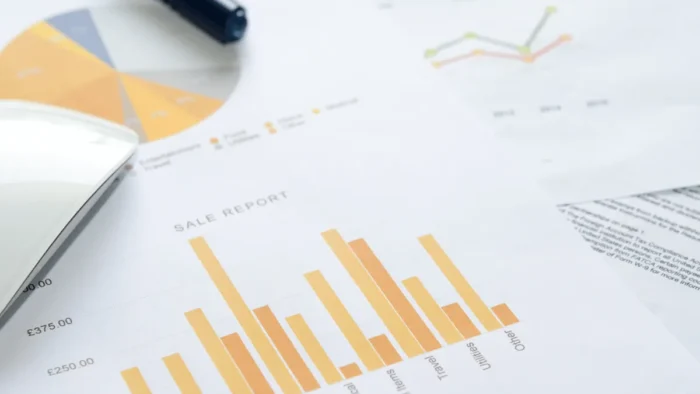If you run a small business, you know that financial stability is important, and you must keep a close eye on your business’s financial position to ensure continued success. Financial trends from the economy will always impact your company’s future, but knowing them can help you protect your business.
In this article, we’ll look at some of the current and upcoming financial trends that are going to affect small businesses, as well as some ways that you can mitigate their potential effects.
Greater Need for Borrowing
With costs rising and inflation an ongoing challenge, one financial trend is that more small companies have to borrow money to keep afloat, which could include both long-term and short-term borrowing. All types of companies can require long-term loans to plan for new milestones and expand, while short-term borrowing helps them meet day-to-day financial obligations, often while waiting for clients to pay. This has led to more companies looking at loans and business credit cards.
More Awareness of Credit Rewards
With increased borrowing, a financial trend is that more business leaders are also looking for the best way to use financial products to their benefit. Many companies are now taking advantage of using business credit cards that offer rewards and cashback.
“Many people are still unaware that you can make a line of credit work for you. Business credit cards not only offer quick and seamless access to funds but also present attractive cashback options. For small businesses, securing a lucrative cashback deal can transform their bottom line, significantly boosting overall profitability. It’s a strategic approach that is often overlooked but has the power to yield substantial financial benefits.”
David Luck, Co-founder and CEO of Capital on Tap
Higher Interest Rates
Hikes in interest rates are just a fact of life at the moment, and while the outlook might appear stable right now, banks are predicting more interest rate increases to come. This has made various types of borrowing too expensive for some small businesses, which means companies must look for alternative funding or find ways to tighten their belts.
Increased Costs
As we’ve already mentioned, prices are increasing across the board. While many of us will experience this primarily when buying food or looking for housing, it’s also significantly affecting small businesses. Smaller companies can’t benefit from the same economies of scale as larger companies, and prices are generally higher for them per unit. So, there is a financial trend where smaller companies feel the pinch much more than larger ones.
Greater Competition
On top of struggling with outgoings, many small companies find their income dipping thanks to increased competition. With over 5 million new small businesses opening in 2022, the market has become more crowded, and the financial implications of this are concerning, especially for start-ups and younger companies. Of course, there are always niches in the market that new businesses can fill or that existing companies can expand into.

Trusting Employees with Purchases
In many large companies, the finance manager holds the purse strings and oversees almost all transactions, but many small companies are developing new working models. Some small employees are giving their employees the trust and freedom to make business-related purchases without going through a long-winded process of applying for funds or requesting reimbursement. This can save companies a lot of time and paperwork, and, as we know, time is money.
More Tech Use
Technology is making its presence felt in just about every aspect of life, and this trend is also affecting financial subjects, of course, without exception. With faster online payments, contactless payment options, payment apps, automated payments, cryptocurrency, and more, it’s getting easier and faster to send, receive, and track payments, which small businesses can benefit from in various ways.
More Loan Rejections
More companies are looking for credit, as this, combined with higher interest rates, leads to more loan rejections, especially for small businesses. With high-interest rates making repayments more of a challenge while companies simultaneously need to draw on more capital, many traditional lenders are getting more selective about who they approve for loans. This means that small companies have to look around for new lenders, work on their business credit scores, and ensure they have suitable repayment methods.
“If a small business is struggling with their credit score, the best way to address this is with the sensible use of a business credit card. By avoiding excessive spending and consistently making timely payments, a business credit card can serve as a powerful tool to enhance your company’s creditworthiness. This, in turn, opens doors to increase borrowing opportunities.”
Damian Brychcy, COO and US MD of Capital on Tap
Fewer Government Support Programs
Many small companies relied on government support, especially during the Covid-19 pandemic. Schemes such as the Paycheck Protection Program were vital to help small businesses keep running despite a drop in revenue.
With the pandemic now in the rearview mirror, these government schemes are being phased out, which is increasing the financial pressure on some companies. Borrowing money and careful financial planning are now requiring greater focus.
Increase in International Trade Following Covid-19
On the other hand, since the Covid-19 pandemic is less of an issue, international trade has opened back up and is flourishing. This includes relying on international suppliers more and being open to international markets, boosting both outgoings and revenue, depending on the business.
Small Business Financial Trends: Conclusion
The financial landscape is always changing, and small businesses work with small margins, so staying abreast of internal and external developments is vital. While there are economic issues such as higher interest rates, lower loan acceptance, and more competition, there are also plenty of measures that small businesses can take to improve their financial standing. These include looking at business credit cards for flexible lines of credit, exploring post-Covid possibilities, and improving their credit score.





